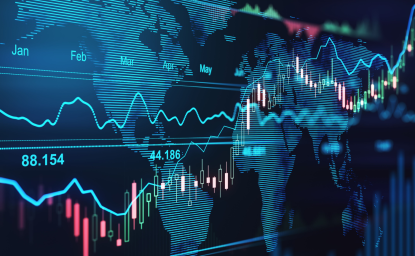As the nation ponders how best to make supply chains resilient and how to “friendshore” the sourcing of vital imports, a question requires more consideration – Who are America’s friends?
The ravages of the pandemic and rising tensions with China upended traditional sources of supply for vitally important goods such as semiconductors and medical products. Huge backlogs at ports, shortages of available trucks and lengthy delays at borders have created anxiety about the ongoing availability of vital goods and components. Yet over the past year, things have improved markedly. The Federal Reserve’s most recent Global Supply Chain Pressure Index show that since April 2022, delivery times have been slashed and goods are moving pretty much as they did before the pandemic.
But supply chain worries persist. Reliance on Taiwan for 90% of the world’s highest-end semiconductors and on China for 63% of the rare-earth minerals mined globally causes handwringing, not just in Silicon Valley, but in the Pentagon.
Despite efforts to fire up production of rare earths in the US and ramp up investment in semiconductor manufacturing through the Chips and Science Act, there is no way domestic production of these goods will ever result in supply sufficient to meet the escalating demand. There is and always will be a need to import these and other products.
The overriding, bipartisan view in Washington is that if these chains of supply are to be resilient, they must be centered in friendly environs. We know who the enemies, or at least the rivals are – Russia, for sure, North Korea, certainly, Venezuela, it looks that way, and China, probably. But the question remains – Who are America’s friends?
It’s an increasingly important question because to qualify for the subsidies and tax breaks offered by the Inflation Reduction Act and the Chips and Science Act, companies must either manufacture in the US or import needed components from “friends.” The definition of friend can be subjective, so the Commerce Department has provided a handy definition – those countries with which the US has a trade agreement. According to the US Trade Representative’s Office, there are 22 such countries. The largest US trade partner is China, yet no agreement exists between the world’s two biggest economies. Canada and Mexico are covered.
But the US has no trade agreement with its the fourth- and fifth-largest trading partners, Japan and the European Union. This is unfortunate because both are certainly considered friends, and both are major suppliers of critical imports, including high technology goods, medicines and automotive products.
Washington got around this with Japan earlier this year by signing the Agreement on Strengthening Critical Minerals Supply Chains. A similar deal with Brussels is pending. Aware of the US government largesse available to “friends,” many countries have been clamoring for similar treatment, thus far to no avail.
Countries that have fallen through the gaps are not small players. They include the largest country in Latin America, the world’s largest Muslim country, large important players in Southeast Asia, the two largest economies in Africa – and pretty much the rest of that continent as well.
As Washington competes with Beijing for global influence, it raises questions about the wisdom of a policy that results in the cold shoulder for Brazil, Indonesia, South Africa, Nigeria and Thailand. A policy reducing some 850 million people to an afterthought appears short-sighted.
Don’t think the leaders of these countries haven’t taken notice. Brazil’s President Luiz Inacio Lula de Silva has made poking Uncle Sam in the eyes a centerpiece of his foreign policy. He has called for the dumping of the dollar as the world’s reserve currency and he has embraced China in an ever-tighter bear hug. Notably, he warmly welcomed Venezuelan President Nicolas Maduro, a pariah to the US and other Western countries, to a meeting in Brasilia. For good measure, Lula denounced US sanctions on Venezuela and called for their immediate lifting.
All these jilted countries, and many others as well, have resisted US efforts to take sides in the Ukraine-Russia war and to shun close economic ties with China. South Africa may or may not have been shipping arms to Russia, as US Ambassador to South Africa Reuben Brigety has alleged. All these countries count China as their largest trading partner.
And yet, all these countries would welcome closer economic ties with the US. Indonesia, the world’s largest producer of nickel, critical in the production of electric automobile batteries, is seeking a trade agreement along the lines of one it struck with Japan and another pending with the European Union.
For South Africa, the world’s largest producer of manganese, and Nigeria, Africa’s largest economy, the situation is even worse. These countries already have a trade agreement with the US, the African Growth and Opportunity Act. AGOA expires in 2025 and despite intensive lobbying by many African governments, Biden administration trade officials are ambivalent about its renewal.
There are valid arguments for updating the agreement to focus more broadly on a deal with the 55 nation African Continental Free Trade Agreement. There is also valid criticism that opportunities available under the current AGOA have not been seized and that the principal African export to the US – oil – is not conductive to greater African participation in higher value manufacturing or global value chains. But US trade officials are so wary about any association with trade agreements that serious requests from important allies are greeted with hemming, hawing and shoulder shrugging.
For Asian partners, Washington offers the Indo-Pacific Economic Framework, an economic cooperation with no market access provisions. In negotiations with 13 other countries, the US has so far shown little interest in developing meaningful regulatory provisions. Is it any wonder the 13 other countries are so lukewarm about IPEF? India has rejected any discussions on trade whatsoever and has said it will not agree to any significant rules covering the environment or digital trade. The others grumble that IPEF is a but pale imitation of the far more important Comprehensive and Progressive Trans-Pacific Partnership, to which most of them belong and from which the US walked away in the first days of the Trump presidency.
At the end of May, 36 prominent business groups wrote to US Commerce Secretary Gina Raimundo and US Trade Representative Katherine Tai, expressing deep concern over the direction of the talks. They contend Washington’s approach risks “not only failing to deliver meaningful strategic and commercial outcomes but also endangering US trade and economic interests in the Indo-Pacific region and beyond.”
Ambassador Tai has already discarded the possibility of including tariff reductions in these negotiations and now apparently balks at discussing high-quality standards across the range of manufacturing and agricultural products of export interest to the US. Even long-held US negotiating positions on digital trade pertaining to cross border flows of data and data localization are seemingly being discarded.
If neither the US business community nor the other trade partners involved in these negotiations take them seriously, for whom this effort is being expended?
A “worker centric” trade policy as advocated by US National Security Advisor Jake Sullivan and Ambassador Tai is a good idea, but shouldn’t it embrace the 41 million US workers whose jobs depend on trade?
A similarly tepid initiative, the Americas Partnership for Economic Prosperity, was launched last June with 11 Latin American and Caribbean countries. Like IPEF, there is no discussion of market access or closer investment ties. South America’s two largest economies, Brazil and Argentina, are not even participating in the discussions.
There remains goodwill for the US. The governments and people of Indonesia and Thailand have not forgotten the US military’s humanitarian response to the devastating 2004 earthquake and tsunami that killed more than 200,000 people. At least 16,000 military personnel provided the region with medical treatment, fresh water, food and other supplies.
American soft power is unrivaled. Among the richly diverse, multi-ethnic population of the US, there are tens of millions of people of African, Asian and Latin American descent who have cultural and familial links to their homelands. These are real advantages in establishing strong links with other countries.
But governments are rarely moved by sentiment. The cold calculations now being made in Brasilia, Jakarta and Pretoria are that the US is not interested in closer economic links with their countries or their regions. China in the meantime is the largest trading partner for 120 countries and through its Belt and Road Initiative has, over the past two decades, invested $155 billion in Sub-Saharan Africa and some $160 billion in Latin America. In 2020 and 2021 alone, Chinese Belt and Road investments in Asia came to roughly $120 billion.
Many of the emerging countries Washington now discounts are rife with political, social and economic uncertainty. Their interests do not always align with those of the US. But if the strategy in dealing with these countries is to keep them at arm’s length, the Biden administration needs to accept that US influence will continue to wane and its powers of persuasion will steadily diminish.
Author

Director of the Information and External Relations Division and Chief Spokesman at the World Trade Organization (retired)

Wahba Institute for Strategic Competition
The Wahba Institute for Strategic Competition works to shape conversations and inspire meaningful action to strengthen technology, trade, infrastructure, and energy as part of American economic and global leadership that benefits the nation and the world. Read more

Explore More
Browse Insights & Analysis





